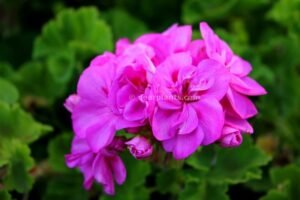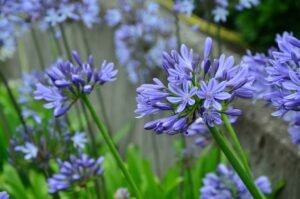Dahlias are one of the most cultivated flowers in the world. In this guide we will learn how to plant dahlias but also how to propagate and enrich our garden.
Dahlia is a genus of about 30 species and 20000 cultivars usually tuberous-rooted perennials. They are native to mountainous areas of Central America.
[printPlantMetadata]
They have mid to dark green leaves 20-50cm (8-20in) long. Dahlias are popular for they flowerheads that grow in a variety of forms and colors.
They can be white, yellow, orange, red, pink or purple in such a variation of hues that will make it possible to match with any color range you need to you garden.
Dahlias flower from mid-summer to autumn when the first frosts arrive.
All Dahlias are good for cut flowers and especially the giant-flowered dahlias, are also suitable for exhibition.

Types of Dahlias
Dahlias are classified according to the shape of their flowers:
Single
Flowers of the type of single dahlias usually have 8 to 10 wide petals around an open central disc.
Anemone
The flowers of the anemone dahlia type are completely double. Each with one or more rings of flattened radius petals around a dense group of shorter tubular petals. Usually these flowers have longer petals than those of single dahlias.
Collarette
The flowers of the collarete type of dahlias are single with 8 to 10 wide and external petals. They have an internal “collar” of smaller petals surrounding an open central disc.
Water lily
The water lily dahlia type flowers are completely double with large petals that are flat or with slightly curved margins, giving the flower a flat appearance.
Decorative
The flowers of the type of decorative dahlias are completely double with no visible central disc. The petals are broad and flat, sometimes twisted, that curl slightly at the edges.
Ball
The flowers of the type of ball dahlias are spherical, totally double, sometimes slightly flattened at the top, with densely compacted petals, almost tubular.
Pompon
Pompon dahlia flowers have a shape similar to ball dahlias, but in miniature and more spherical in shape. The flowers are completely double and do not reach more than 5 cm in diameter.
Cactus
The flowers of the type of cactus dahlias are completely double. They have narrow, pointed petals that can be straight or curved. They have curved edges in more than two-thirds of their length.
Semicactus
Semicactus dahlia type flowers are completely double, similar to cactus dahlias. However, they have petals with a broader base and the edges are usually curved towards the tips.
Miscellaneous
Miscellaneous dahlia flowers have different shapes that do not fit the other groups. It includes flower-like shapes from other plants and can be single or double.
This classification was defined by the National Dahlia Society.

How to plant dahlias
Dahlias prefer fertile soils, rich in humus and that drain well. They like to be planted in full sun and fed regularly to produce flowers in abundance.
Stake them or support by other means, mainly the tallest varieties and the cultivars with the largest flowers.
Dahlias do not like strong winds. They also don’t like the soil remains moist and cold.
Dahlia tubers must be lifted off the ground or protected with mulch if the temperature in your area remains below 0ºC for many days in winter. Store them in a cool, dark place until the frosts have passed and you can plant them again. You can also plant dahlias earlier in a pot indoors or in a sheltered place and gain some time in the season.
If you harvest the flowers regularly or cut the ones that ripen, the plants will respond by producing more flowers until the first frosts arrive.

How to propagate dahlias
Dahlias are plants that are easily propagated dividing the tuberous roots or by cuttings. In this way it maintains the characteristics of the propagated variety.
It is also possible to reproduce dahlias through seeds.
Division of dahlia tubers
The division of tuberous roots is done before spring, before the plant starts to sprout for the new growing season.
Divide in order to obtain parts that have at least one bud (‘eye’) and a tuber.
Basal cuttings
Dahlia cuttings are made by cutting new shoots at the base when they are born in early spring.
Cut close to the tuber, preferably bringing a little of the tuber attached and bury in a compost with good drainage.
Keep in a cool, light and humid place. The same general procedure as for softwood cuttings.
Seeds
Sow the seeds and keep them at 16°C – 20°C for fast germination.
Transplant the new plants into individual pots and let them settle before planting in the garden.



